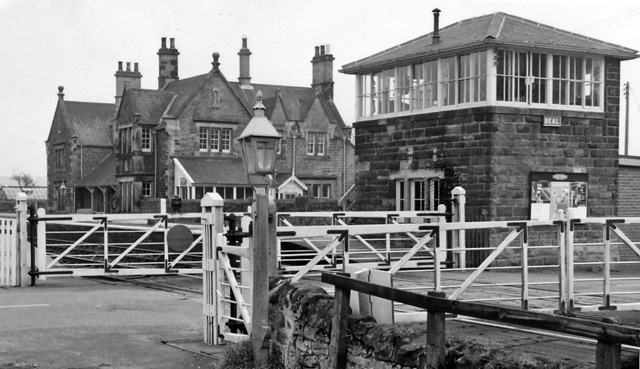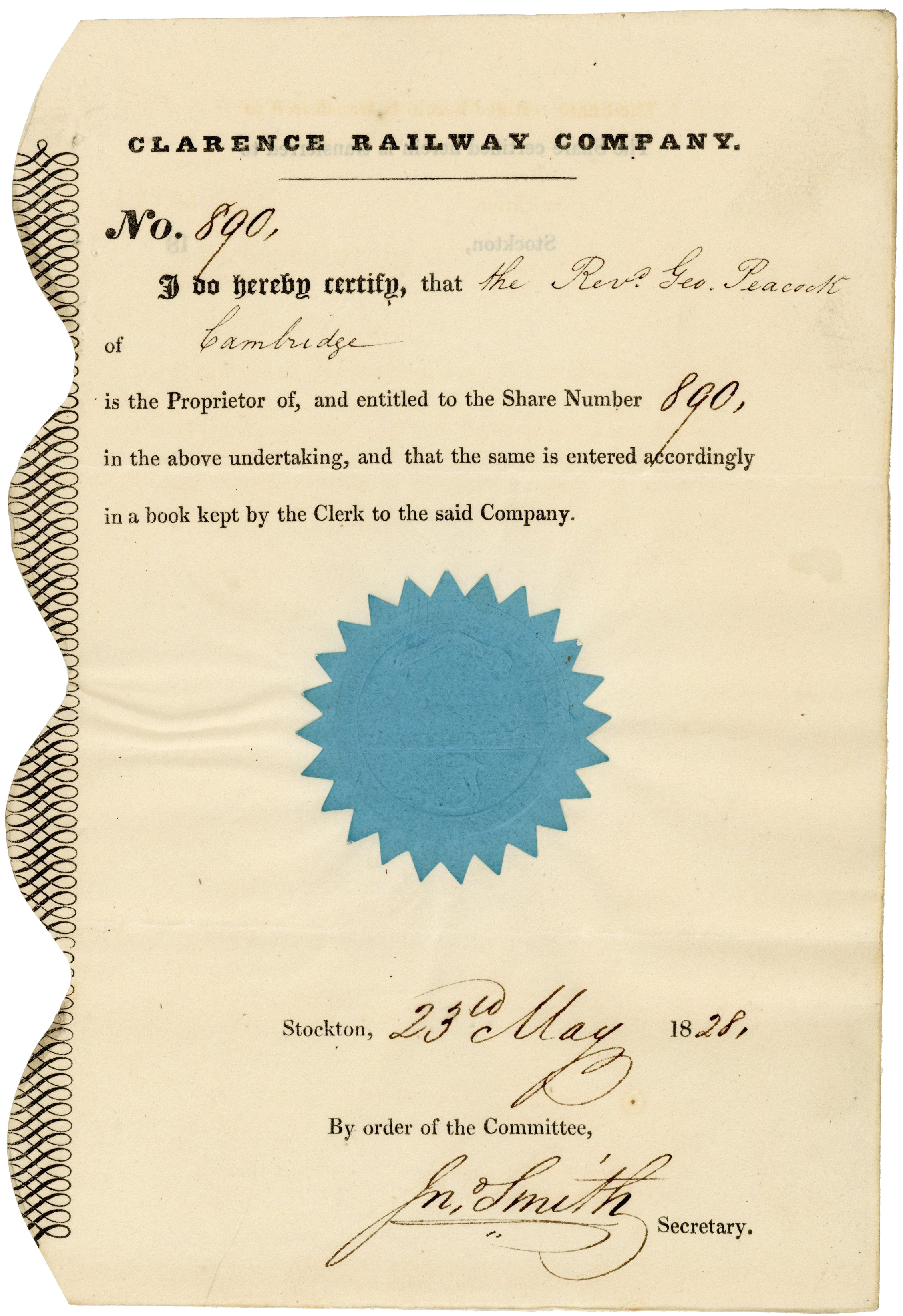|
Bishop Auckland Railway Station
Bishop Auckland is a railway station that serves the market town of Bishop Auckland in County Durham, North East England, north-west of Darlington. The station is the Western terminus of the Tees Valley Line, which links it to via . It is owned by Network Rail and managed by Northern Trains. History Opening Bishop Auckland gained its first rail link in 1842, when the Stockton and Darlington Railway (S&DR) backed Bishop Auckland & Weardale Railway (BA&WR) gained the powers via an act of Parliament to build a railway line from the S&DR's station at via Bishop Auckland and Witton-le-Wear into Crook, County Durham. The company initially built a temporary terminus at South Church, which opened on 19 April 1842. A road coach service then extended the service into Bishop Auckland, and a secondary road coach service also ran to Rainton Meadows. After completion of the Shildon Tunnel, the BA&WR erected a permanent station on the current site, which opened to freight on 8 Novemb ... [...More Info...] [...Related Items...] OR: [Wikipedia] [Google] [Baidu] |
Bishop Auckland
Bishop Auckland ( ) is a market town and civil parishes in England, civil parish at the confluence of the River Wear and the River Gaunless in County Durham, England. It is northwest of Darlington and southwest of Durham, England, Durham. Much of the town's early history surrounds the Bishop of Durham, Bishops of Durham and the establishment of Auckland Castle's predecessor, a hunting lodge, which became the main residence of Durham Bishops. This is reflected in the first part of the town's name. During the Industrial Revolution, the town grew rapidly as coal mining became its largest industry. Decline in the coal mining industry during the late twentieth century has changed the town's largest sector to manufacturing. Since 1 April 2009, the town's local authority has been Durham County Council. The unitary authority replaced the previous Wear Valley District and Durham County councils. The parliamentary constituency of Bishop Auckland (UK Parliament constituency), Bishop Au ... [...More Info...] [...Related Items...] OR: [Wikipedia] [Google] [Baidu] |
Crook, County Durham
Crook is a market town in the Durham County Council unitary authority and ceremonial county of County Durham, England. It is located on the edge of Weardale and sometimes referred to as the "Gateway to Weardale". Crook lies about south-west of Durham, England, Durham, north-west of Bishop Auckland and from Willington, County Durham, Willington. The A689 road from Durham leads up through Wolsingham and Stanhope, County Durham, Stanhope into the upper reaches of Weardale. Until 1974, the town was in Crook and Willington Urban District and had a civil parish, parish council. History Crook first appeared as an agricultural village around 1795 although its surrounding districts; Billy Row, Stanley, White Lea and Helmington Row, were established much earlier.The developmen ... [...More Info...] [...Related Items...] OR: [Wikipedia] [Google] [Baidu] |
Limestone
Limestone is a type of carbonate rock, carbonate sedimentary rock which is the main source of the material Lime (material), lime. It is composed mostly of the minerals calcite and aragonite, which are different Polymorphism (materials science), crystal forms of calcium carbonate . Limestone forms when these minerals Precipitation (chemistry), precipitate out of water containing dissolved calcium. This can take place through both biological and nonbiological processes, though biological processes, such as the accumulation of corals and shells in the sea, have likely been more important for the last 540 million years. Limestone often contains fossils which provide scientists with information on ancient environments and on the evolution of life. About 20% to 25% of sedimentary rock is carbonate rock, and most of this is limestone. The remaining carbonate rock is mostly Dolomite (rock), dolomite, a closely related rock, which contains a high percentage of the mineral Dolomite (mine ... [...More Info...] [...Related Items...] OR: [Wikipedia] [Google] [Baidu] |
Frosterley And Stanhope Railway
The North Eastern Railway (NER) was an England, English rail transport, railway company. It was incorporated in 1854 by the combination of several existing railway companies. Later, it was amalgamated with other railways to form the London and North Eastern Railway at the Railways Act 1921, Grouping in 1923. Its main line survives to the present day as part of the East Coast Main Line between London and Edinburgh. Unlike many other pre-Grouping companies the NER had a relatively compact territory, in which it had a near monopoly. That district extended through Yorkshire, County Durham and Northumberland, with outposts in Westmorland and Cumberland, England, Cumberland. The only company penetrating its territory was the Hull & Barnsley, which it absorbed shortly before the main grouping. The NER's main line formed the middle link on the Anglo-Scottish "East Coast Main Line" between London and Edinburgh, joining the Great Northern Railway (Great Britain), Great Northern Railwa ... [...More Info...] [...Related Items...] OR: [Wikipedia] [Google] [Baidu] |
Bishop Auckland 2 Railway Station1805267 F99ac746
A bishop is an ordained member of the clergy who is entrusted with a position of authority and oversight in a religious institution. In Christianity, bishops are normally responsible for the governance and administration of dioceses. The role or office of the bishop is called episcopacy or the episcopate. Organisationally, several Christian denominations utilise ecclesiastical structures that call for the position of bishops, while other denominations have dispensed with this office, seeing it as a symbol of power. Bishops have also exercised political authority within their dioceses. Traditionally, bishops claim apostolic succession, a direct historical lineage dating back to the original Twelve Apostles or Saint Paul. The bishops are by doctrine understood as those who possess the full priesthood given by Jesus Christ, and therefore may ordain other clergy, including other bishops. A person ordained as a deacon, priest (i.e. presbyter), and then bishop is understood to hold ... [...More Info...] [...Related Items...] OR: [Wikipedia] [Google] [Baidu] |
Weardale Extension Railway
The Stanhope and Tyne Railway was an early British mineral railway that ran from Stanhope to South Shields at the mouth of the River Tyne in County Durham, England. It ran through the towns of Birtley, Chester Le Street, West Stanley and Consett. The object was to convey limestone from Stanhope and coal from West Consett and elsewhere to the Tyne, and to local consumers. Passengers were later carried on parts of the line. The line opened on 15 May 1834, but it was not financially successful. It had been formed by a partnership, and the heavily indebted partners floated a new company, the Pontop and South Shields Railway, to continue operation and take over the debt. Part of the line was bought by the Derwent Iron Company, which later became the Consett Iron Company. Much of the S&TR system was built through hilly, sparsely populated terrain across the moors of County Durham, and it incorporated several rope-worked inclines as well as using horse traction and steam locomoti ... [...More Info...] [...Related Items...] OR: [Wikipedia] [Google] [Baidu] |
Stanhope & Tyne Railway
The Stanhope and Tyne Railway was an early British mineral railway that ran from Stanhope to South Shields at the mouth of the River Tyne in County Durham, England. It ran through the towns of Birtley, Chester Le Street, West Stanley and Consett. The object was to convey limestone from Stanhope and coal from West Consett and elsewhere to the Tyne, and to local consumers. Passengers were later carried on parts of the line. The line opened on 15 May 1834, but it was not financially successful. It had been formed by a partnership, and the heavily indebted partners floated a new company, the Pontop and South Shields Railway, to continue operation and take over the debt. Part of the line was bought by the Derwent Iron Company, which later became the Consett Iron Company. Much of the S&TR system was built through hilly, sparsely populated terrain across the moors of County Durham, and it incorporated several rope-worked inclines as well as using horse traction and steam locomoti ... [...More Info...] [...Related Items...] OR: [Wikipedia] [Google] [Baidu] |
Derwent Iron Company
The Consett Iron Company Ltd was an industrial business based in the Consett area of County Durham in the United Kingdom. The company owned coal mines and limestone quarries, and manufactured iron and steel. It was registered on 4 April 1864 as successor to the Derwent and Consett Iron Company. This in turn was the successor to the Derwent Iron Company, founded in 1840. The company's seven collieries and various coke ovens came into the ownership of the National Coal Board, when British coal companies were nationalised in 1947. The Consett Iron Company itself was nationalised in 1951, becoming part of the Iron and Steel Corporation of Great Britain. It was denationalised shortly afterwards, then renationalised in 1967. The Consett Iron Company was absorbed into British Steel Corporation in 1967, and the location became known as the Consett Steel Works. British Steel Consett Works was closed in 1980. Early history In 1840 a group of local businessmen led by Jonathan Richards ... [...More Info...] [...Related Items...] OR: [Wikipedia] [Google] [Baidu] |
Clarence Railway
The Clarence Railway was an early railway company that operated in north-east England between 1833 and 1853. The railway was built to take coal from mines in County Durham to ports on the River Tees and was a competitor to the Stockton and Darlington Railway (S&DR). It suffered financial difficulty soon after it opened because traffic was low and the charged a high rate for transporting coal to the Clarence, and the company was managed by the Exchequer Loan Commissioners after July 1834. An extension of the Byers Green branch was opened in 1839 by the independent West Durham Railway to serve collieries in Weardale. The Stockton and Hartlepool Railway opened in 1841 to connect the Clarence to Hartlepool Docks and the Hartlepool West Harbour & Dock opened in West Hartlepool in 1844. On 17 May 1853 the Clarence Railway, Hartlepool West Harbour & Dock and Stockton and Hartlepool Railway were merged to become the West Hartlepool Harbour and Railway. The West Hartlepool Harbour and ... [...More Info...] [...Related Items...] OR: [Wikipedia] [Google] [Baidu] |









